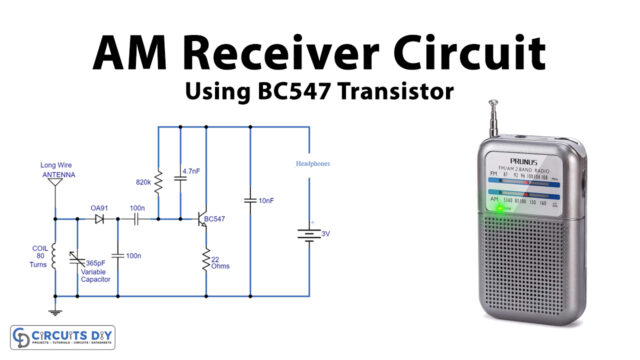In this tutorial, we are going to make a Simple LED flasher using a 2N2646 transistor. 2N2646 is a Silicon Unijunction Transistor or UJT. UJT transistors are different from other transistors as they are not used for linear amplification. They are used in pulse and timing circuits, sensing circuits, and thyristor trigger circuits. This transistor has two base pins and one emitter pin. In this circuit rather than using a 555 timer IC to generate pulses for our LED, we have used this transistor.
This is the easiest led flasher circuit. It is only using six components and is beginner-friendly.

Hardware Components
The following components are required to make LED Flasher Circuit
| S.no | Component | Value | Qty |
|---|---|---|---|
| 1. | Battery | 9-12V | 1 |
| 2. | UJT transistor | 2N2646 | 1 |
| 3. | LED | – | 1 |
| 4. | Resistors | 10K, 390Ω | 1, 1 |
| 5. | Electrolytic Capacitor | 100µF | 1 |
| 6. | Connecting Wires | – | 1 |
| 7. | Breadboard | – | 1 |
2N2646 Pinout

For a detailed description of pinout, dimension features, and specifications download the datasheet of 2N2646
LED Flasher Circuit

Working Explanation
The operating voltage of this circuit is 9 to 12 volts. The UJT transistor is working as an oscillator in this circuit with 10K ohms resistors and a 100uF capacitor.
Another resistor of 390 ohms is used to limit the current entering the transistor and the LED. The speed of LED blinking is set by the value of R1 and C1. For R1 you can use any resistor from 1K to 1M ohms. In order to make this adjustable, you can also use a potentiometer or variable resistor of 1M ohms in the place of R1. For the capacitor C1, you can use any capacitor from 1uF to 100uF.
Applications and Uses
LED flashers have a wide range of applications. It can be used in timer switches, warning devices, safety blinkers, decorative pieces, etc.













